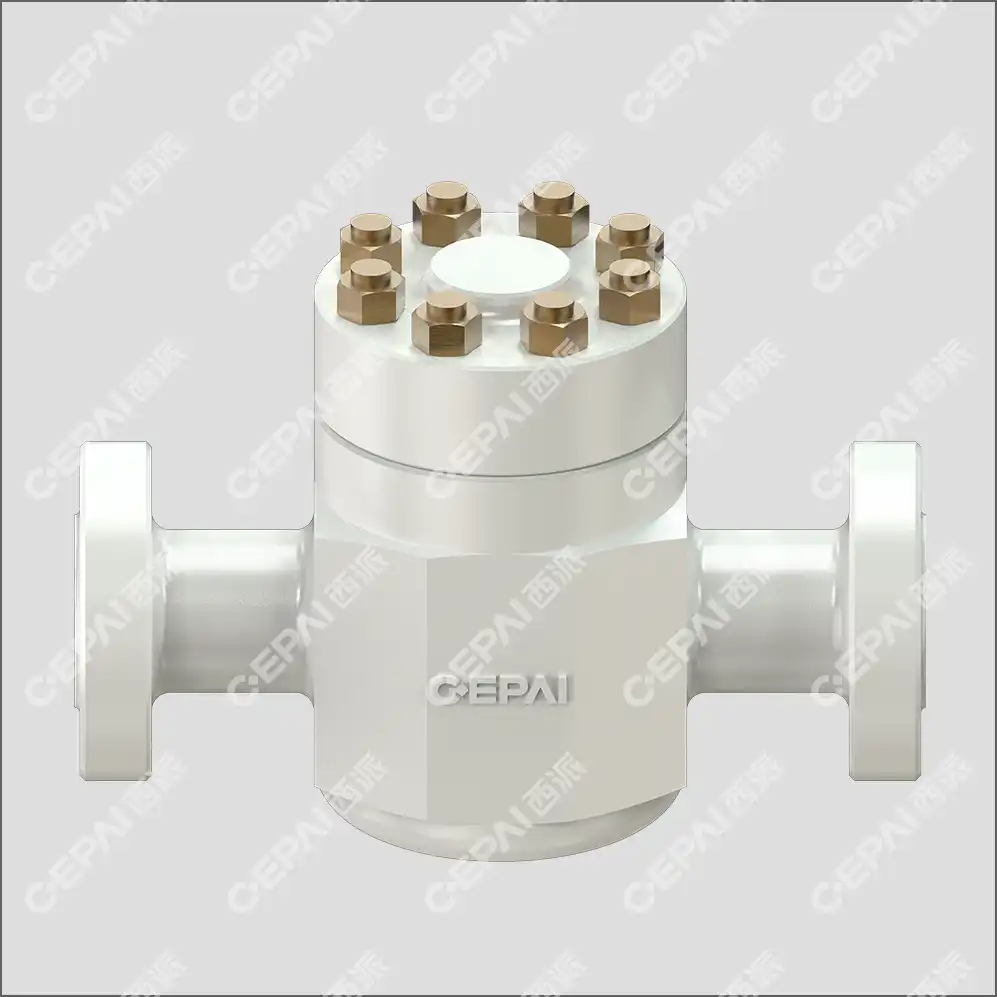Types and Designs of Check Valves
Globe Check Valves: Features and Applications
Globe check valves are a popular choice in many industrial settings due to their robust design and excellent sealing capabilities. These valves feature a spherical body with a horizontally divided internal chamber, allowing for precise control of fluid flow. The globe design enables a shorter stroke and quicker response time compared to other valve types. In oil and gas applications, globe check valves are often preferred for their ability to handle high-pressure situations and their compatibility with various fluids, including crude oil, natural gas, and water.
Swing Check Valves: Principles and Uses
Swing check valves operate on a simple principle, utilizing a hinged disc that swings open to allow forward flow and closes to prevent backflow. This design is particularly effective in applications with low-pressure drops and where minimal resistance to flow is required. Swing check valves are commonly used in water supply systems, pumping stations, and HVAC systems. Their straightforward construction makes them easy to maintain and repair, contributing to their popularity in various industries.
Lift Check Valves: Operation and Benefits
Lift check valves employ a disc or ball that rises vertically to allow flow and drops back into place to prevent backflow. This design is particularly suited for applications with frequent flow reversals or pulsating flows. Lift check valves offer advantages such as quick response times and the ability to handle higher pressures compared to swing check valves. They are often used in compressor discharge lines, boiler feed systems, and other high-pressure applications where rapid valve closure is essential to prevent damage to equipment.
Key Components and Working Mechanism of Check Valves
Essential Parts of a Check Valve
Check valves, including globe check valves, consist of several critical components that work together to ensure proper functionality. The main body houses the internal parts and provides connections to the piping system. The disc or ball acts as the primary sealing element, moving to allow or restrict flow. The seat creates a tight seal when the valve is closed, preventing backflow. Some designs incorporate springs to assist in closing the valve more quickly or to maintain a closed position under low-pressure conditions. Understanding these components is crucial for proper maintenance and troubleshooting of check valves in industrial settings.
Flow Dynamics and Valve Operation
The operation of check valves relies on the principles of fluid dynamics. As fluid flows in the intended direction, it exerts pressure on the disc or ball, forcing it open and allowing passage. When flow stops or reverses, the pressure differential causes the sealing element to move back into the closed position, effectively blocking backflow. In globe check valves, the flow path is designed to minimize turbulence and pressure drop, contributing to their efficiency in high-pressure applications. The precise engineering of these valves ensures they respond quickly to changes in flow direction, protecting downstream equipment from potential damage.

Factors Affecting Check Valve Performance
Several factors can influence the performance of check valves, including fluid properties, flow rates, and installation orientation. The viscosity and density of the fluid can affect the valve's response time and sealing capabilities. Flow rates must be within the valve's specified range to ensure proper operation and prevent issues such as water hammer or excessive wear. Proper installation orientation is crucial, especially for gravity-dependent designs like swing check valves. Regular maintenance, including inspection of sealing surfaces and moving parts, is essential to maintain optimal performance and extend the valve's service life.
Applications and Benefits of Check Valves in Various Industries
Oil and Gas Industry Applications
In the oil and gas industry, check valves play a vital role in ensuring the safe and efficient operation of drilling, production, and transportation systems. Globe check valves are particularly well-suited for these applications due to their ability to handle high pressures and corrosive fluids. They are commonly used in wellhead assemblies to prevent backflow from the production tubing into the annulus. Check valves are also essential components in pipeline systems, protecting pumps and compressors from reverse flow that could cause severe damage. In offshore platforms, check valves help maintain the integrity of subsea pipelines and prevent environmental contamination in case of equipment failure.
Water Treatment and Distribution Systems
Check valves are indispensable in water treatment and distribution systems, where they help maintain water quality and system efficiency. In treatment plants, check valves prevent treated water from flowing back into raw water sources, ensuring the purity of the processed water. In distribution networks, these valves are installed at pump stations to prevent water from flowing back through idle pumps, which could lead to energy waste and potential contamination. Check valves also play a crucial role in backflow prevention devices, protecting potable water supplies from contamination by preventing cross-connections between drinking water and non-potable water sources.
Industrial Process Control and Safety
In various industrial processes, check valves contribute significantly to control and safety measures. They are used in chemical processing plants to prevent mixing of incompatible substances and to control the direction of flow in complex piping systems. In power generation facilities, check valves protect turbines and other critical equipment from damage caused by sudden flow reversals. In hydraulic and pneumatic systems, these valves help maintain pressure and prevent loss of fluid or air pressure when pumps or compressors are not operating. By ensuring unidirectional flow, check valves enhance the overall reliability and safety of industrial processes, reducing the risk of equipment failure and potential hazards.
Conclusion
Check valves, particularly globe check valves, are essential components in fluid control systems across various industries. Their primary function of allowing flow in one direction while preventing backflow is crucial for maintaining system integrity, protecting equipment, and ensuring operational efficiency. From oil and gas production to water treatment and industrial process control, check valves play a vital role in safeguarding operations and enhancing safety. As technology advances, the design and materials used in check valves continue to evolve, offering improved performance and reliability in increasingly demanding applications.
Contact Us
For high-quality check valves and expert guidance on fluid control solutions, trust CEPAI Group. Our advanced globe check valves and other specialized products are designed to meet the most challenging requirements in oil and gas, water treatment, and industrial applications. Experience the benefits of superior performance, durability, and reliability. Contact us at cepai@cepai.com to learn how our innovative valve solutions can optimize your operations and enhance safety in your fluid control systems.


_1746598538016.webp)



